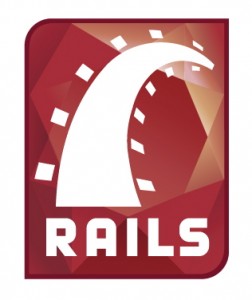I started out my official, programming career as a Java developer for my current company. At the time, the design team was moving their development interests from purely desktop applications to a a more web-eccentric playing field, ergo web-based applications. The itinerary was to find out if the web was a viable platform (don’t laugh, we’re being headed by a bunch of old peeps who are still touchy about the current computing trends) for development. My answer of course was yes, so I took up training as a Java Web developer.
Things were great but like most things Java, the going was SLOW but steady.
 Then came Rails.
Then came Rails.
At first, I was really hesitant. Strong typing (READ excessive typing) was the foundation of a good programming language; at least that’s what countless Java books that I’ve read told me. So how does a language that puts the fun back in development catches attention? Well, it might be cliche but…
It all started with Hello World
Nearly all programming languages starts with this old and tired way of displaying the text “Hello World”. Ruby got me interested by it’s simplicity:
puts ‘Hello World’
and that’s it 😀
Of course that really doesn’t say much about the language’s capability but you have to admit that it’s bound to turn heads :D.
So why switch?
At first it was really curiosity… although I will admit that I did already have Ruby experience prior to this via the gem WATIR (don’t ask why:D) but really, at one point I did ask myself, what’s all the fuss about Ruby on Rails? So I started reading, reading… reading and then read some more until I decided that my first rails application would be the project we had for our Software Development lab subject back in college. The result? I’m in love 😀
I’ll try sharing the project some time in the future but I have some re-writing to do 😀 It’s currently in workprint mode… it’s full of notes, comments and rants right in the source code so.. yeah I need to clean it first :D.
– to be edited. Need to sleep for now 😀
 The first thing on my developer itinerary after getting my MacBook Pro is to install my development tools. That includes upgrading the ruby and rails gem versions packaged with OS X 10.6 and installing Xcode which is included on Snow Leopard’s install DVD. Things proceed smoothly until I tried to install the mysql gem.
The first thing on my developer itinerary after getting my MacBook Pro is to install my development tools. That includes upgrading the ruby and rails gem versions packaged with OS X 10.6 and installing Xcode which is included on Snow Leopard’s install DVD. Things proceed smoothly until I tried to install the mysql gem.